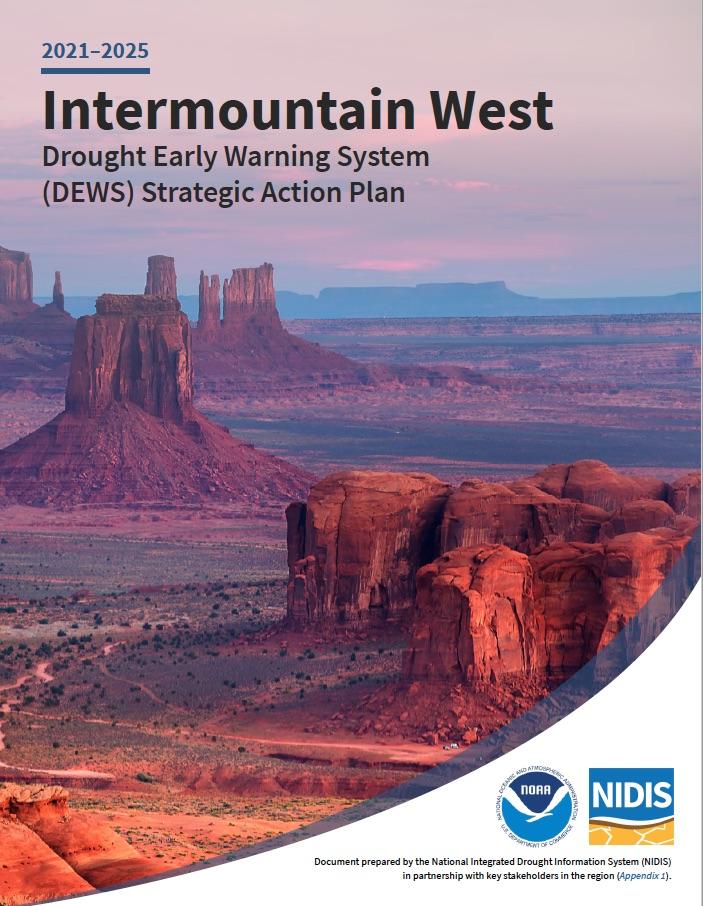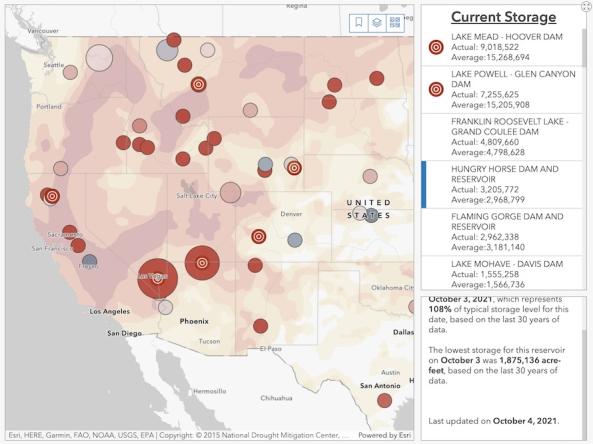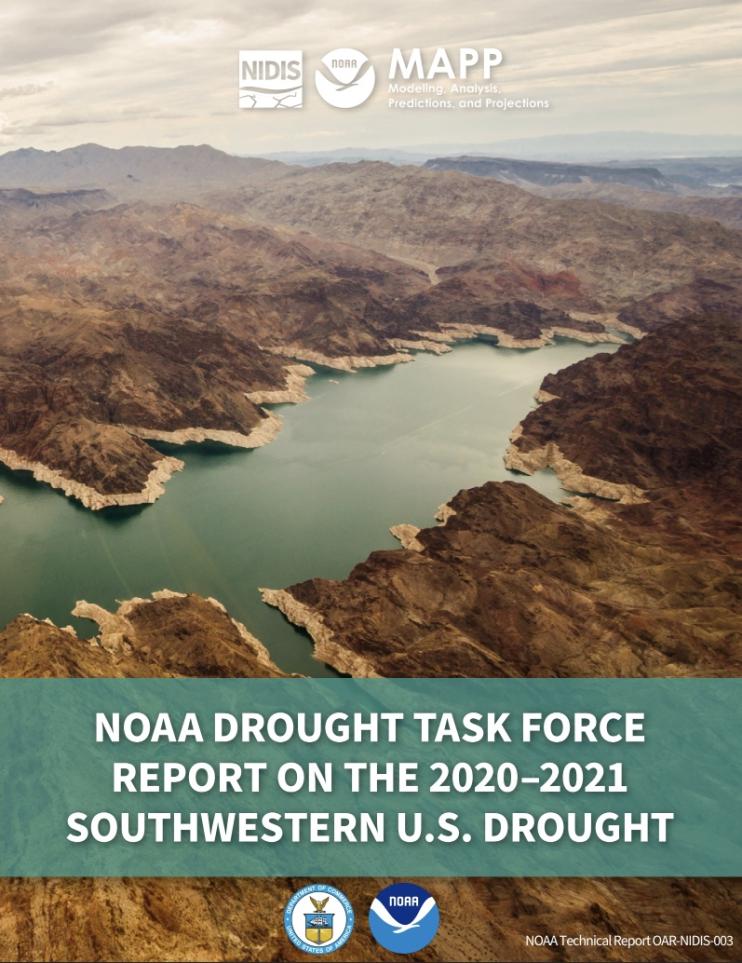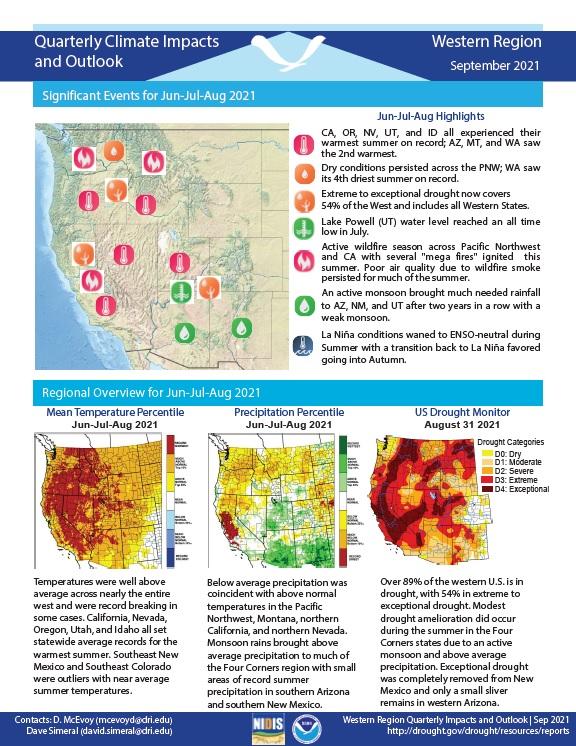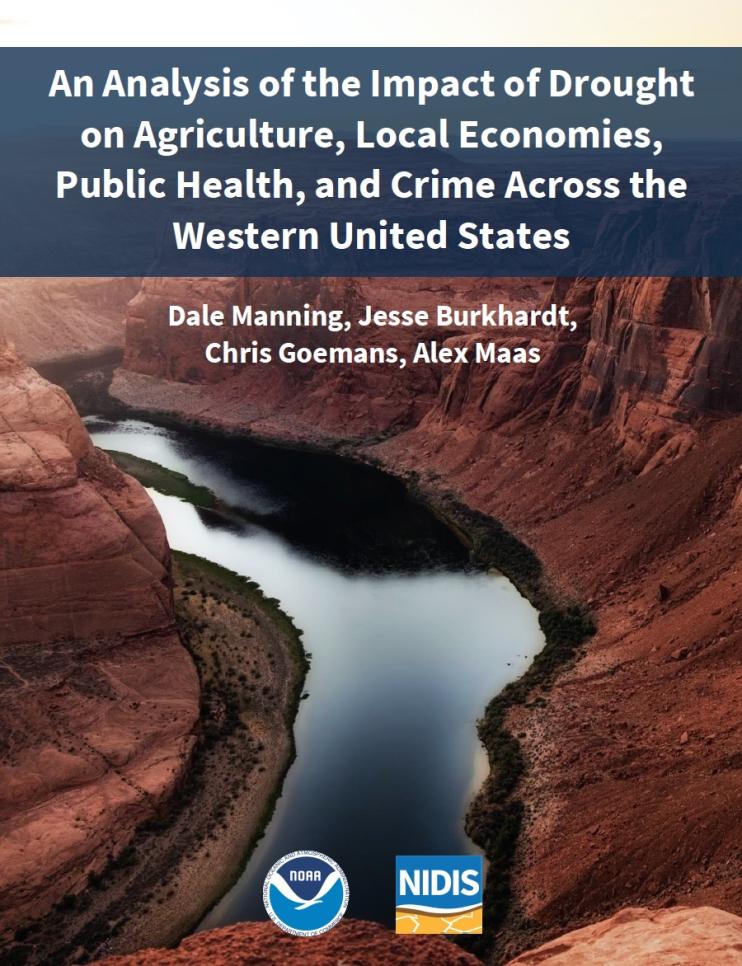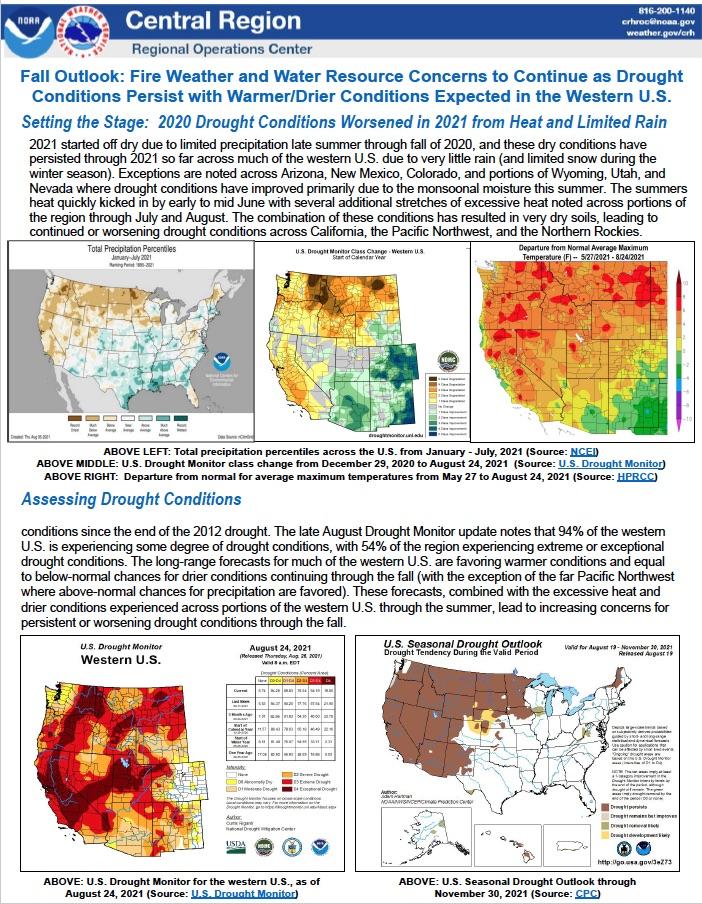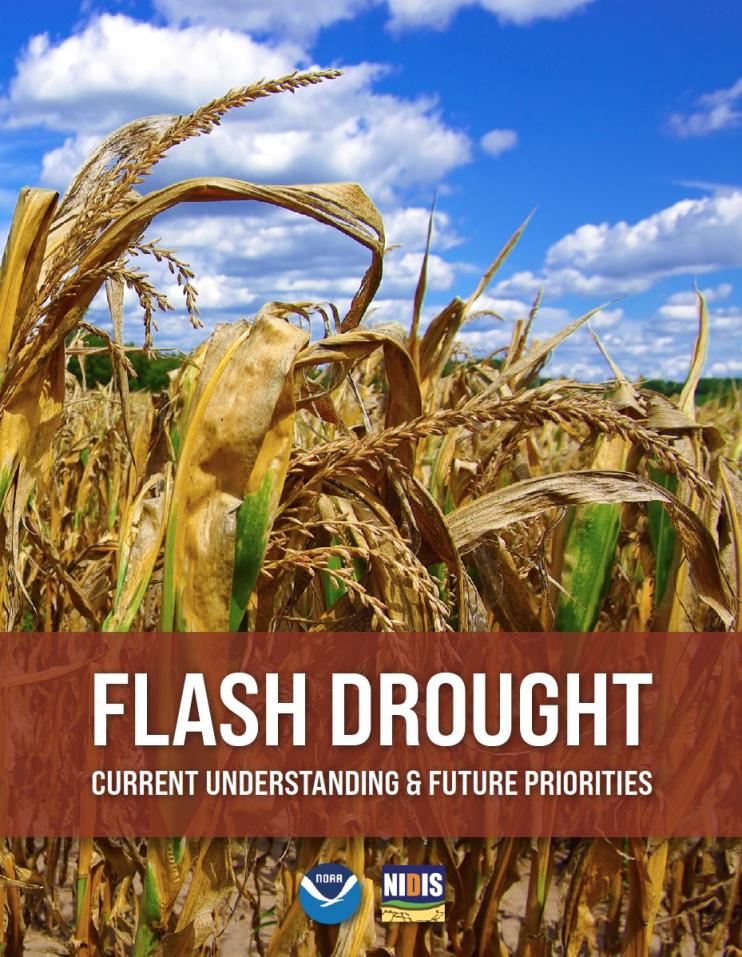The 2021–2025 Intermountain West Drought Early Warning System (DEWS) Strategic Action Plan was developed following a series of stakeholder meetings held virtually in October and November 2020. Each virtual meeting was focused on one of the following sector needs: Colorado River management and issues; water management (non-Colorado River); farming and cropping; livestock; recreation and tourism; and forestry, ecology, and fire management. Attendees were asked about how drought impacted their lives, their jobs, and their businesses.
Using the state-of-science and the collective expertise of the NOAA Drought Task Force, this report addresses three questions about the period of below normal rain, snow, runoff, and soil moisture, known as the 2020-21 U.S. Southwest drought: (1) How bad is it? (2) What caused it? And (3) When will it end?
Quarterly Climate Impacts and Outlook for the Western Region for June - August 2021. Dated September 2021.
Temperatures were well above average across nearly the entire west and were record breaking in some cases. Over 89% of the western U.S. is in drought, with 54% in extreme to exceptional drought.
Severe, extreme, or exceptional drought conditions have become increasingly common throughout the western United States over the past 20 years. Abnormally dry conditions can lead to a wide range of negative economic impacts across a wide range of sectors that either directly or indirectly depend on weather-dependent ecosystem services.
The National Weather Service Central Region developed 2021 Fall Hazard Outlooks in coordination with NOAA's National Centers for Environmental Information and National Integrated Drought Information System (NIDIS); U.S. Department of Agriculture; High Plains Regional Climate Center; and National Interagency Fire Center's Geographic Area Coordination Centers. This outlook highlights the various Fall hazards that could occur and potential impacts across the Western U.S.
Droughts are often thought of as slow-moving natural hazards. However, some serious droughts occur with such rapid onset that it seems as if they appear in a “flash,” rendering them and their consequences hard to predict and prepare for. These flash droughts can have substantial agricultural and economic consequences, including billions of dollars in losses.


